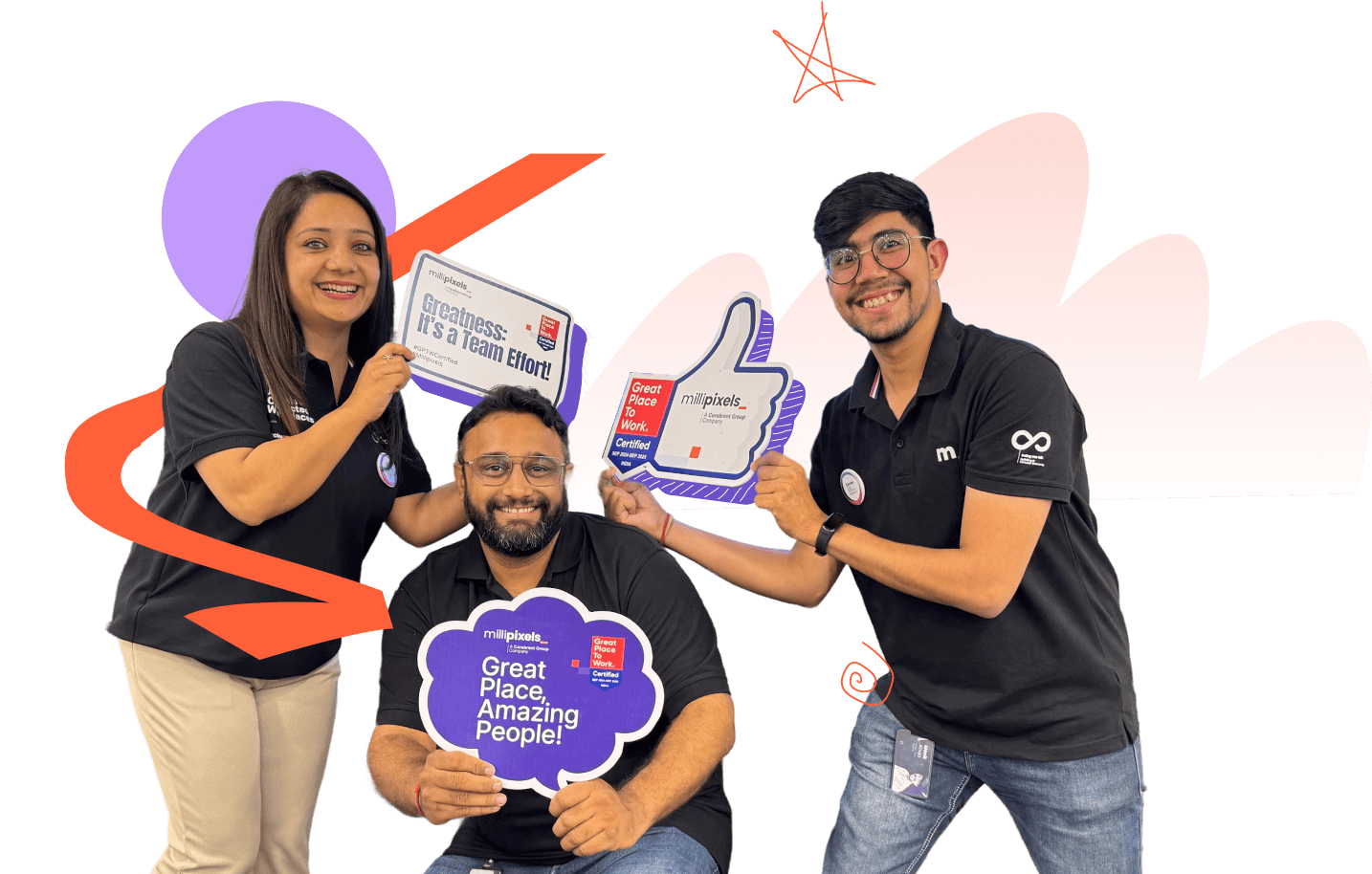Blog
7 Adaptive Software Development Practices to Accelerate Product Delivery in 2025
Discover how adaptive software development can speed up product delivery. Explore seven proven practices that help businesses innovate faster and stay competitive.
September 05, 2025

Introduction
Are your product launches constantly delayed despite having a solid roadmap? Or worse, do changing customer demands throw your entire development plan off track?
Today businesses are under relentless pressure to deliver products faster without sacrificing quality. That’s where adaptive software development steps in. Unlike traditional, rigid models, adaptive development thrives on change, fosters seamless collaboration, and focuses on delivering value at speed.
Whether you’re building enterprise-grade applications, crafting custom healthcare software solutions, or relying on custom software development services, adaptive practices are revolutionizing the way companies innovate and scale.
In this blog, we’ll unpack what adaptive software development is, why it matters more than ever, the seven proven practices that accelerate product delivery, and how your organization can leverage it to stay ahead.
What Is Adaptive Software Development?
Adaptive Software Development (ASD) is a modern approach designed to handle uncertainty, rapid market changes, and evolving customer needs. Unlike traditional waterfall methods that rely on rigid planning, ASD thrives on continuous learning, iterative progress, and flexibility. It emphasizes three core concepts:
Speculate: Set high-level goals but stay open to change.
Collaborate: Foster cross-functional teamwork across stakeholders.
Learn: Continuously improve based on real-time feedback.
In dynamic industries like SaaS, eCommerce, and healthcare software development, ASD ensures products evolve with customer demands rather than lagging behind them. Notably, 84% of development teams report a 41% reduction in debugging time through adaptive AI integration, highlighting ASD's efficiency in enhancing software quality assurance .
Why Adaptive Software Development Is Essential for Faster Product Delivery
Speed is everything. In a market where customer preferences change overnight and competitors launch updates every few weeks, relying on outdated methodologies can slow you down. Traditional approaches often struggle to manage:
- Changing requirements
- Complex cross-team dependencies
- Compliance-heavy workflows (especially in enterprise software development and healthcare)
Adaptive Software Development bridges this gap. By embracing agility, rapid prototyping, and collaborative workflows, companies:
- Reduce time-to-market
- Build products customers actually want
- Minimize costly reworks and scope creep
From startups scaling MVPs to enterprises rolling out multi-region applications, adaptive frameworks have become the gold standard for faster, smarter delivery. In fact, organizations adopting ASD methodologies experience a significant acceleration in product delivery timelines, underscoring its effectiveness in meeting market demands .
If your business is looking to accelerate product delivery while ensuring quality and compliance, Clarient’s adaptive software development services can help you implement these practices effectively and scale your solutions seamlessly.

7 Adaptive Software Development Practices That Accelerate Product Delivery
Here are the seven proven adaptive practices that top tech teams use to speed up product delivery while maintaining quality and compliance:
1. Leveraging Offshore Software Development to Scale Teams Rapidly
Using offshore software development allows teams to scale rapidly without hiring delays. Adaptive teams strategically distribute tasks across global locations, enabling 24/7 development cycles and access to specialized expertise in AI, cloud, or cybersecurity.
Actionable Tip: Use tools like Jira and Slack to synchronize across time zones and manage handoffs.
Example: A SaaS startup leveraged an offshore AI team in Eastern Europe to deliver a machine learning recommendation engine 6 weeks earlier than planned.
Top Offshore Locations for Adaptive Development:
| Region | Time Zone Advantage | Avg. Hourly Rate | Key Expertise |
| Eastern Europe | +3 to +5 hours ahead | $25–50 | AI, Cloud, Backend Dev |
| India | +4.5 to +6.5 hours ahead | $20–40 | Full-stack, Mobile Dev |
| Latin America | Similar to US EST | $30–55 | Web Dev, UI/UX Design |
2. . Embracing Co-Development Software for Collaborative Product Ownership
Co-development software lets businesses collaborate closely with external teams, reducing miscommunication and speeding up iterations. Adaptive workflows, such as those you get with co-development software, reduce miscommunication and make decision-making faster. In fact, a major mortgage services provider slashed its feature rollout time by up to 75%, delivering new capabilities in only 6–8 weeks instead of 3–6 months.
Key Benefits:
- Faster Feedback Loops: Direct involvement of client teams reduces iteration cycles.
- Shared Responsibility: Teams align better on goals and KPIs.
- Reduced Miscommunication: Transparent collaboration ensures fewer reworks.
- Accelerated Approvals: Decisions are made faster as all stakeholders are engaged.
Example: A fintech startup paired internal PMs with an external team to launch a secure payment feature 2 months ahead of schedule.
3. Implementing Enterprise Software Development Standards Without Slowing Sprints
Enterprise software development often involves strict compliance, multi-department approvals, and legacy system dependencies.
Adaptive practices break compliance-heavy processes into manageable sprints and integrate automated checks, enabling enterprises to accelerate development while staying audit-ready. For instance, a machine learning–based compliance automation framework reduced manual compliance effort by 73.3%, cut process duration from 7 days to just 1.5 days, and improved accuracy from 78% to 93%.
Actionable Tip: Use CI/CD pipelines with automated security testing to maintain enterprise standards without slowing development.
Example: A multinational bank adopted adaptive workflows to roll out new banking features 3x faster while passing internal audits seamlessly.
4. Driving Innovation With Custom Software Development Services
For unique business needs, custom software development services allow adaptive teams to build solutions that fit workflows perfectly. Tailored architectures reduce dependency on generic systems, and companies leveraging adaptive custom solutions have seen fewer post-launch bug fixes, ensuring higher quality and faster iterations.
Actionable Tip: Map core business processes before development to ensure custom modules align perfectly with adaptive sprints.
Example: A retail chain implemented a personalized recommendation engine using adaptive custom software, reducing feature deployment from 4 months to 2 months.
5. Integrating Adaptive Practices Into the Agile Software Development Life Cycle
Combining adaptive practices with the agile software development life cycle maximizes both speed and precision. Iterative sprints with rapid prototyping ensure teams test ideas early and pivot without delays. Agile-adaptive hybrids have demonstrated improvement in sprint predictability, making it easier to plan releases accurately.
Actionable Tip: Use feature toggles in CI/CD to release experimental updates to small user groups before full deployment.
Example: A SaaS company integrated adaptive prototyping in their Agile process, enabling them to release a major dashboard update 3 weeks ahead of schedule.

6. Adopting Domain-Specific Adaptive Strategies in Healthcare Software Development
Healthcare software development faces strict regulations, data sensitivity, and compliance requirements. Adaptive frameworks allow teams to iterate securely and meet compliance while innovating quickly.
Actionable Tip: Incorporate automated HIPAA/GDPR compliance checks into sprints and maintain real-time audit logs.
Example: A telemedicine platform used adaptive workflows to launch new patient engagement features 6 weeks faster while keeping patient data fully secure.
7. Harnessing Automation and AI to Boost Product Delivery Speed
Automation and AI are integral to adaptive software development. From automated testing to predictive analytics, these tools free developers and accelerate iterations. Organizations adopting AI-driven adaptive practices have accelerated feature release cycles, enabling faster delivery of high-quality updates.
Actionable Tip: Implement AI-driven regression testing to automatically detect issues in new builds and integrate predictive analytics to anticipate user needs.
Example: A SaaS analytics platform reduced manual QA efforts by 50% and deployed new modules weekly using adaptive AI integration.
How to Leverage Adaptive Software Development for Your Business
Adopting adaptive software development isn’t about an overnight overhaul—it’s about integrating flexibility into your workflows step by step while maximizing efficiency and quality. Here’s how businesses can implement it effectively:
Assess Your Needs and Strategic Approach
- Determine whether scaling through offshore software development, adopting co-development software models, or combining both is the right approach. Consider team size, domain expertise, and time-zone advantages to optimize productivity.
Choose Tailored Solutions With Custom Software Development Services
- Leverage custom software development services to build solutions designed specifically for your business workflows. Map out key processes to identify where off-the-shelf products fall short and where adaptive custom modules can shorten delivery cycles.
Automate Aggressively Across the Agile Software Development Life Cycle
- Integrate CI/CD pipelines, automated QA testing, AI-driven analytics, and feature toggles to accelerate iterative releases. Automation ensures your teams can innovate rapidly while maintaining compliance, especially for enterprise software development and healthcare software development.
Upskill and Align Your Teams
- Train developers, product managers, and QA teams on adaptive principles to fully leverage agile software development life cycle methodologies. Encourage cross-functional collaboration, real-time feedback loops, and iterative decision-making for faster, higher-quality deliveries.
By embedding adaptive software development into your development culture, your business can deliver products faster, stay competitive in dynamic markets, and consistently meet evolving customer expectations with precision and compliance.
Conclusion: Accelerate Product Delivery With Adaptive Software Development
In an era where speed, agility, and innovation decide market leaders, adaptive software development is no longer optional, it’s essential. By adopting these seven practices, businesses can accelerate product delivery, improve collaboration, and stay ahead of the competition.
Whether you’re considering offshore software development, custom software development services, or co-development software models, the key is to embrace adaptability. The faster you learn, iterate, and deliver, the stronger your position in the market.
Ready to accelerate your product delivery? Explore Clarient's custom software development services and see how we can help you build adaptive solutions that scale effortlessly.
Frequently Asked Questions
1. What is adaptive software development?
Think of adaptive software development (ASD) as a flexible way to build software that can keep up with fast-changing markets and shifting customer needs. Instead of sticking to rigid plans like traditional waterfall methods, ASD focuses on learning as you go, collaborating closely, and delivering results in iterations. It works well for enterprise software development, healthcare software development, and teams following the agile software development life cycle who want to speed up product delivery without compromising quality.
2. What is the suggested first step for entering software development?
If you are just starting, the first thing to do is figure out your goals and the best way to approach development. You might consider offshore software development to access global talent, try a co-development software model to work closely with experienced teams, or use custom software development services to create solutions that fit your specific needs. Pairing any of these with adaptive software development practices makes learning and delivery faster and smoother.
3. What is adaptive software used for?
Adaptive software helps teams deliver products faster, handle complex requirements, and adjust to changing customer needs. It’s especially useful for enterprise software development, tightly regulated healthcare software development, and projects where custom software development services are required. When combined with the agile software development life cycle, adaptive practices help teams test, iterate, and improve quickly while keeping quality high.
4. What is the difference between ASD and DSDM in software engineering?
ASD is all about flexibility, collaboration, and learning as you go, which makes it perfect for projects where things can change fast. DSDM (Dynamic Systems Development Method) is more structured, with strict phases and rules. Both follow the agile software development life cycle, but ASD is better for situations that involve co-development software, offshore software development, or custom software development services, especially in enterprise software development and healthcare software development.

Parthsarathy Sharma
B2B Content Writer & Strategist with 3+ years of experience, helping mid-to-large enterprises craft compelling narratives that drive engagement and growth.
A voracious reader who thrives on industry trends and storytelling that makes an impact.
Share
Are you seeking an exciting role that will challenge and inspire you?

GET IN TOUCH